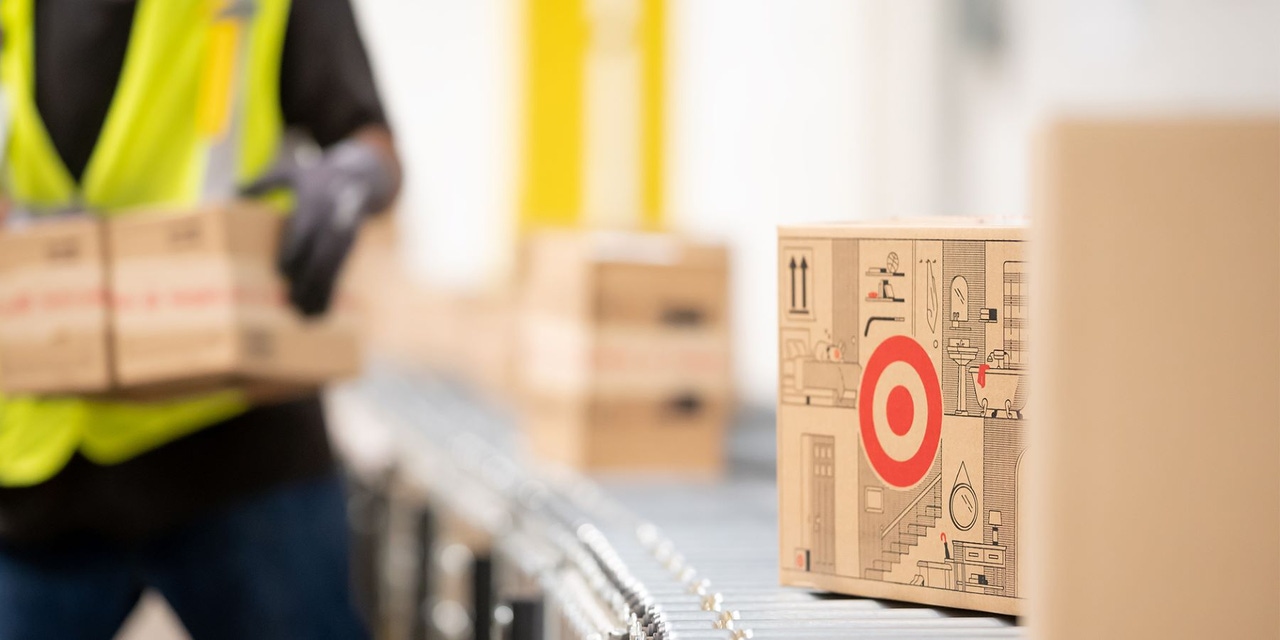How Target laid the groundwork for its delivery growthHow Target laid the groundwork for its delivery growth
The Minneapolis-based retailer’s digital sales exploded during the pandemic, but it had been setting the stage for e-commerce expansion in the years before that.

The year was 1919, and a freight handlers’ strike threatened to delay the shipment of products from New York to Minneapolis.
So, Dayton Dry Goods (the retailer that would eventually become Target Corp.) hired two Curtiss Northwest Airplane Co. planes to pick up 400 pounds of merchandise and deliver it 1,600 miles to Minneapolis in what was the longest commercial flight ever at the time.
“The arriving planes were paraded through the streets of Minneapolis, and throngs of onlookers immediately purchased the in-demand goods,” Target said in a corporate timeline.
The Minneapolis-based retailer’s delivery operations have come a long way over the last century.
On Wednesday, Target pledged to invest $100 million in its next-day delivery operations. The money will be used to open at least a half-dozen new sortation facilities, which allow the retailer to free up backroom space in local stores by moving order sorting and batching to a separate warehouse.
Target’s digital sales skyrocketed during the pandemic, rising nearly $13 billion from 2019 to 2021.
But the company started laying the foundation for delivery well before most people had heard the word “COVID,” with a series of partnerships, pilots and acquisitions.
Dayton’s airplane delivery notwithstanding, Target began experimenting with ship-from-store operations in 2013 with a pilot program in Minneapolis. By the following year, it had launched a $10 rush delivery pilot in several markets with plans to add standard shipping from 136 stores in 38 markets around the country.
“By leveraging the store network as fulfillment centers, we can offer faster standard shipping, typically one or two days, and provide access to store-only items not previously available from Target.com,” said Kathee Tesija, who was then Target’s supply chain and merchandising chief, according to a May 2014 earnings call transcript. (All transcripts come from financial services site Sentieo.)
By 2015, Target went all-in with Instacart, offering delivery of grocery items and other merchandise in as little as an hour, with the promise that Instacart prices would match in-store stickers.
“Our goal is to make grocery shopping easier and more convenient,” Jason Goldberger, who was then Target’s chief digital officer and president of Target.com, said in a statement at the time.
It wasn’t until 2017, though, that Target got very serious about bringing delivery in-house.
The retailer made a couple of high-profile acquisitions that to shore up its operations, acquiring transportation tech company Grand Junction and, most notably, purchasing same-day delivery platform Shipt for $550 million.
"While this acquisition is not expected to have a material direct impact on our financial results, we are excited to bring Grand Junction into the Target team and believe their model will help accelerate our progress in delivery speed, efficiency and a high level of service to Target's last-mile fulfillment,” Target COO John Mulligan told analysts in August 2017, according to a transcript.
The acquisition of Shipt, though, was designed to “close that last-mile delivery gap from days to minutes,” Target CEO Brian Cornell told analysts in March 2018, according to a transcript.
By August of that year, Shipt was operating in more than 1,100 Target stores in more than 160 markets, Target said.
Target does not disclose Shipt’s revenue. The company reported that Shipt’s Target sales grew more than 300% during the pandemic’s early days.
“The delivery capability we have in Shipt became even more important,” Christina Hennington, Target’s chief growth officer, said in March 2021, according to a transcript. “It filled the need for guests who wanted an online order, especially for perishable items, but also for so many other essentials across Target, brought right to their front doors. It offered more personalization, reliability and speed than they could get from a packaged shipment.”
For years, Target has talked about its stores-as-hubs strategy—one that relies on physical stores to fulfill digital orders—which was made possible by putting this e-commerce infrastructure in place.
But those digital orders grew so swiftly in 2020, they couldn’t be contained in Target’s storerooms. So the company began opening “sortation centers” to relieve some of the pressure on local stores.
“The business case for our sortation center is straightforward: by moving the sorting and staging prospects out of the stores, it frees up backroom space, enabling additional throughput,” Mulligan said in November 2020, according to a transcript. “Stores can simply focus on packing the orders, which are then transferred multiple times per day to the sortation center where they can be sorted and staged at a larger scale, driving per-unit efficiencies and potentially reducing the number of split shipments.”
Target called it a more “capital-efficient way” to add delivery capacity.
In November, the retailer noted that digital orders now make up 20% of its business, with upwards of 96% of fulfillment completed in-store.
“And so when you look at what we've done there … continually going back, looking at the process, modifying the process, reinventing the process, investing some capital in some cases to support things like Drive-Up or extra-pack stations and consistently over that time, increasing our unit productivity as it relates to fulfillment in double digits every year since then,” Mulligan told analysts. “And that's created capacity for us to continue to drive our digital business and improved our economic performance in the digital business along the way.”
Read more about:
Target Corp.About the Author
You May Also Like





.webp?width=300&auto=webp&quality=80&disable=upscale)
